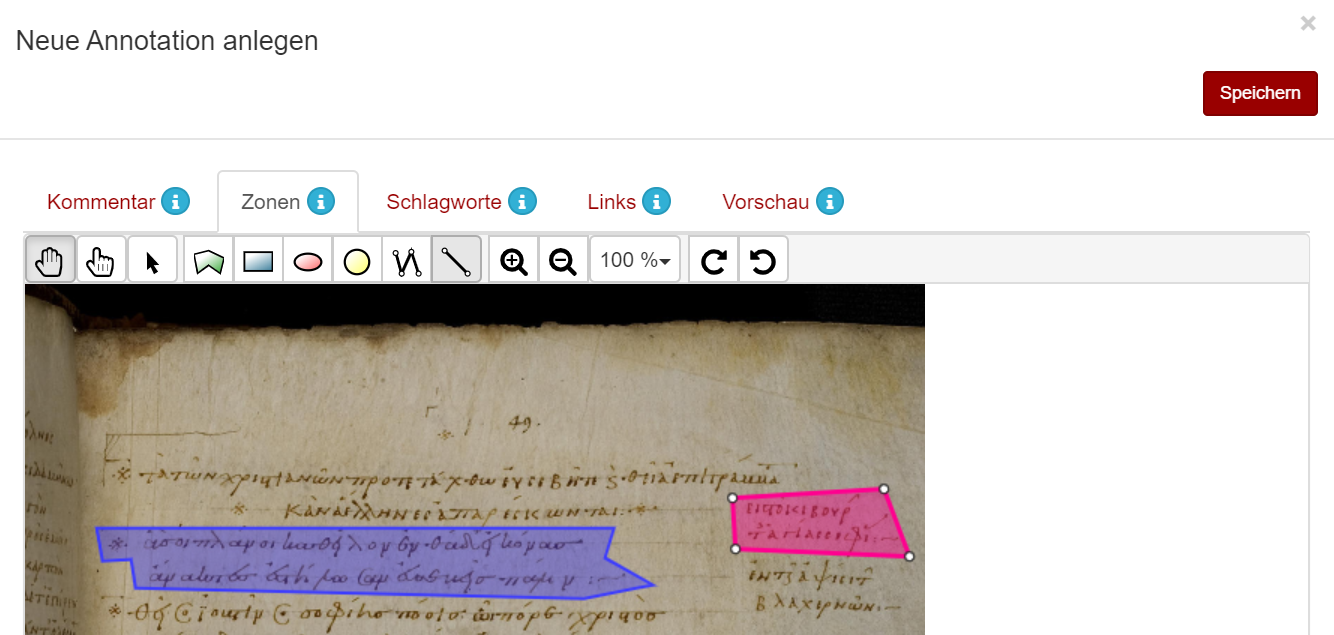SFB 933: Lettered and Inscribed. Inscriptions in Urban Space in the Greco-Roman Period and Middle Ages - Epigrams in and on Byzantine Buildings in Constantinople: Caption and Materiality (4th-14th century).
The project is carried out in the context of the Heidelberg Collaborative Research Centre 933 'Material Text Cultures', which focuses on the materiality of writing (subproject A01, UP4). It is an interdisciplinary research that brings together staff from the University Library and the Institute for Byzantine Archaeology and Art History at Heidelberg University. The subject of the study is epigrams in and on Byzantine buildings and works of art in Constantinople. The focus is on the collection of Christian inscriptions in the Anthologia Palatina (AP). The epigrams were included during the 10th century in this important manuscript (Cod. Pal. graec. 23) which is currently in the Heidelberg University Library.
For some of the inscriptions, including the first 18 from Book I, their original context and location in Constantinople has been preserved through marginal notes by the scribes and references in the text. They are copies of epigrams from the 4th to 10th centuries, among which those from the 5th and 6th centuries clearly predominate.

|
|---|
|
Fragment of a niche with peacock calotte and vine tendrils, as well as surrounding inscription band with donor epigram (AP I. 10). Place of discovery: Polyeuktos Church in Constantinople (524-527 AD). Place of exhibition: Archaeological Museum, Istanbul. Photo: Prof. Dr. Stephan Westphalen |
The Anthologia Palatina is an important source for the identification and reconstruction of epigrams, some of which are fragmentary or no longer extant. One of the most spectacular examples is the founder's inscription of the Polyeuktos Church in Constantinople. The epigram, consisting of a total of 76 hexameter lines, parts of which were found on the numerous fragments of the architectural sculpture, can be completely reconstructed through its inclusion in the Anthologia Palatina (AP I. 10). Furthermore, the archaeological finds in combination with the manuscript made it possible to clearly identify the building complex as the church of the martyr Polyeuktos donated by Anicia Juliana.
The study aims to achieve two interrelated outcomes. On the one hand, the dissertation of the PhD student Solvejg Langer is being prepared. It deals with the archaeological processing and preparation of the Christian epigrams in the Anthologia Palatina and their embedding in the broad spectrum of preserved inscriptions in Constantinople that did not find their way into the AP. On the other hand, digital tools are being developed to enrich the digital facsimile of the AP with transcriptions, translations and annotations. The latter will serve to link the epigrams in the AP with other inscriptions and thus complement the text preserved in the AP with further sources.

- "Digital annotation platform of the Heidelberg University Library used on a page of the Anthologia Palatina."
Contact
ZAW: Institut für Byzantinische Archäologie und KunstgeschichteProf. Dr. Stephan Westphalen
E-Mail
Solvejg Langer
E-Mail
Dr. Maria Effinger
E-Mail
Dr. Gustavo Fernandez Riva
E-Mail
